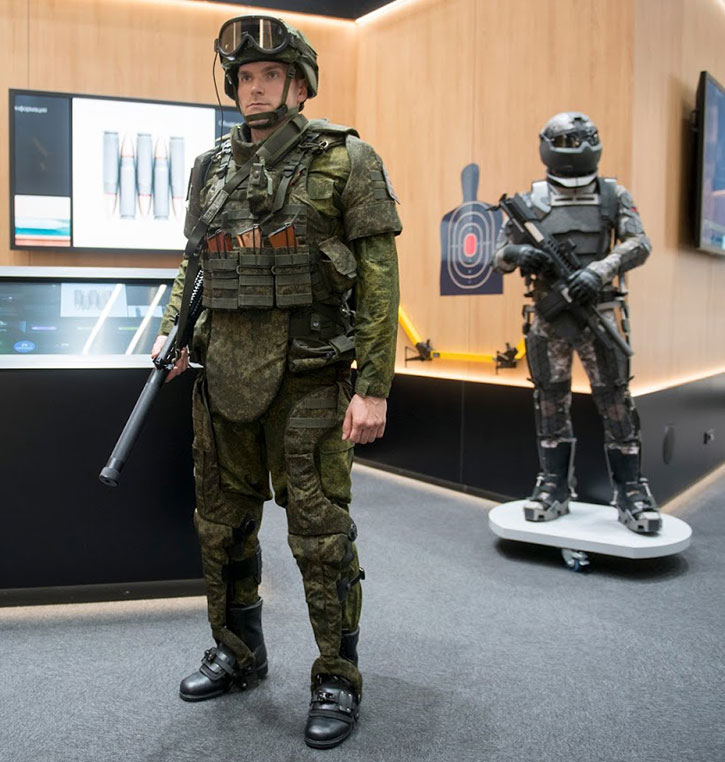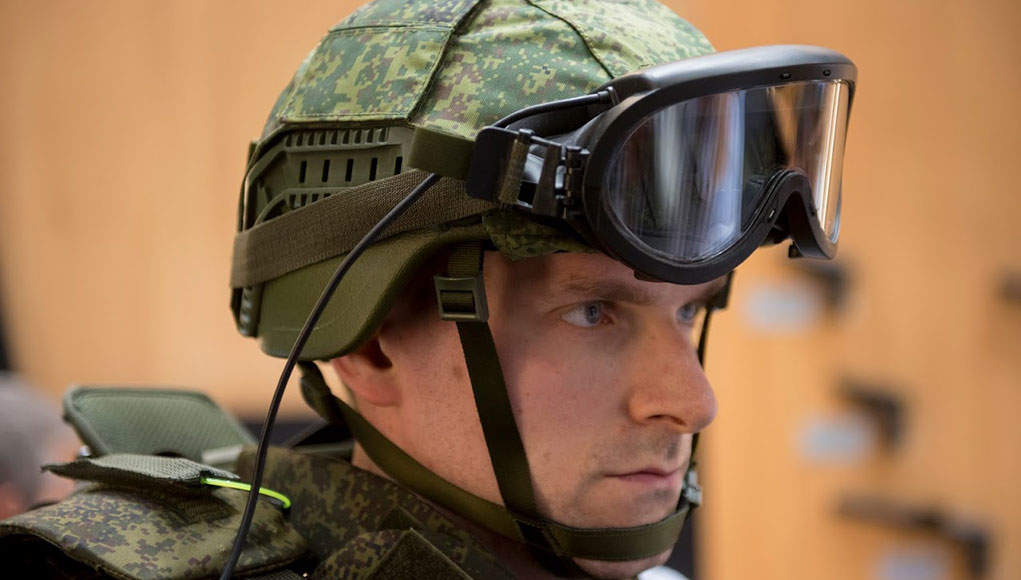An adaptive camouflage developed in Russia could be used in the future to better blend vehicles and soldiers in the environment. Operating like a Chameleon, the new camouflage is able to mimic the color of the environment. Displayed at the annual Army 2018 forum near Moscow this week the new material was applied to a soldier’s helmet which is part of the advanced, third generation Ratnik infantry combat suite.
The electrically-induced material that covers the helmet prototype is able to change color depending on the color of its surrounding environment. The material can display dynamic changes of color intensity and simulate complex images, for example, the motion of leaves in the wind. The new material was developed by Ruselectronics and TSNIITOCHMASH, the Central Research Institute for Precision Machine Building, both operating within the Rostec conglomerate.
“Existing types of camouflage do not change their masking properties depending on changes in the background. For example, soldiers will not be seen in a forest against greenery, but they will be visible against sand or snow. An innovative coating created by Ruselectronics provides unique opportunities for masking. We are demonstrating how it works using one element of equipment, i.e., a helmet. However, its application is much broader. It can be used in clothing, weapons, and military equipment,” said Industrial Director of the Armament Cluster of Rostec Sergey Abramov.
The coating weights few hundred grams per square meter and is applied like ordinary paint and does not require great accuracy in terms of thickness and uniformity. In particular, this means that repairs can be carried out in the field. The power consumption in continuous adaptation mode is no greater than that of a neon lamp.

Another part of the future infantry suite on display at Army 2018 is the advanced exoskeleton developed by TSNIITOCHMASH. This fully functional technology demonstrator has been operationally tested by the Russian Army. The exoskeleton is made of lightweight carbon fiber and supports the musculoskeletal system when a person carries weights up to 50 kg (packs, special gear, armaments, and ammunition) during long marches and assaults. It is a mechanical device with levers and swivels in the shape of human joints. Unlike active exoskeletons, the passive exoskeleton has no power sources, servomotors, electronics and various sensors. This makes it lighter and more reliable (4 to 8 kg depending on the configuration). In addition, an active exoskeleton is also being designed, and its working prototype has already been assembled.
As a passive exoskeleton the fully autonomous system significantly increases the physical abilities of a soldier, protects joints and the spine and can be adjusted to the height of a particular soldier. The exoskeletons are developed by TSNIITOCHMASH and GB Engineering.
“This prototype has already been tested during real military operations,” Abramov said. “The exoskeleton was tested by special detachments of the Russian Ministry of Defense and Internal Affairs bodies in years 2017-2018.




















